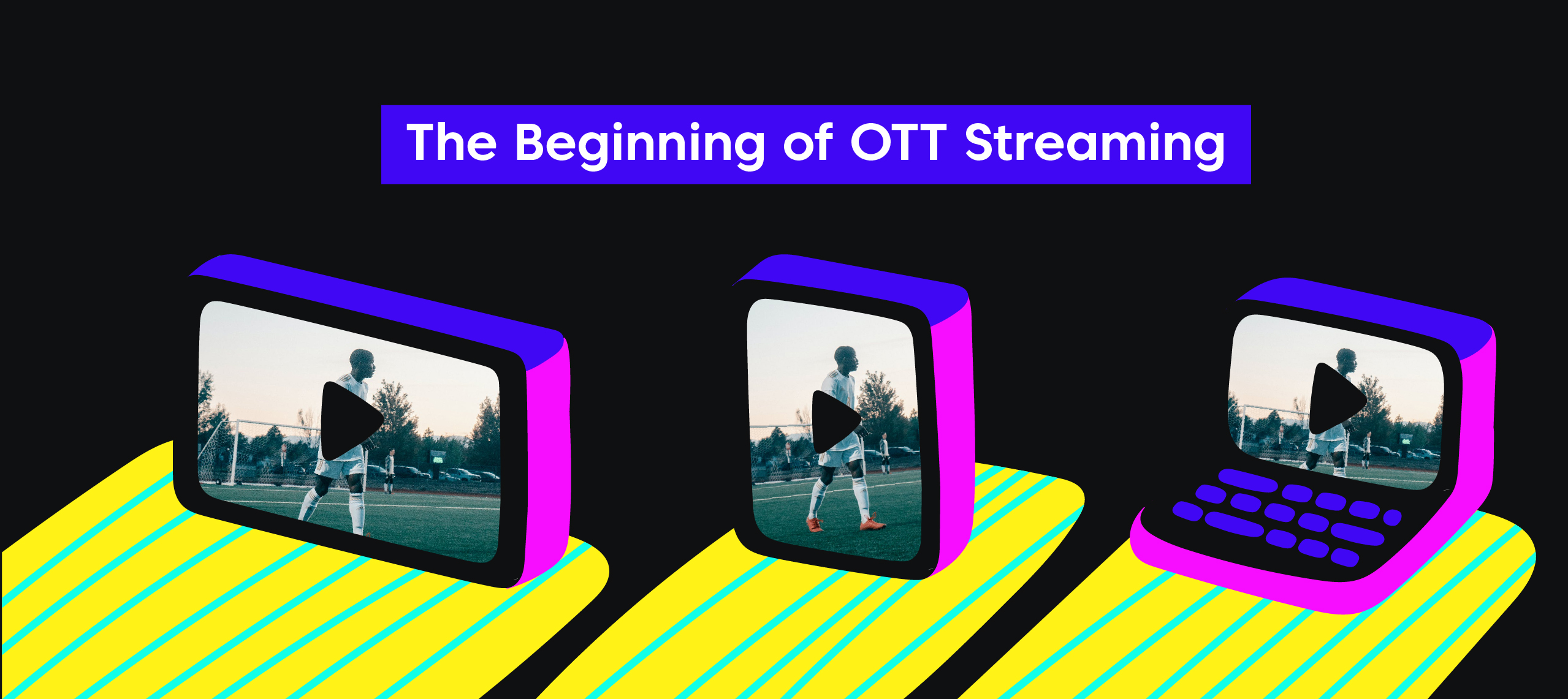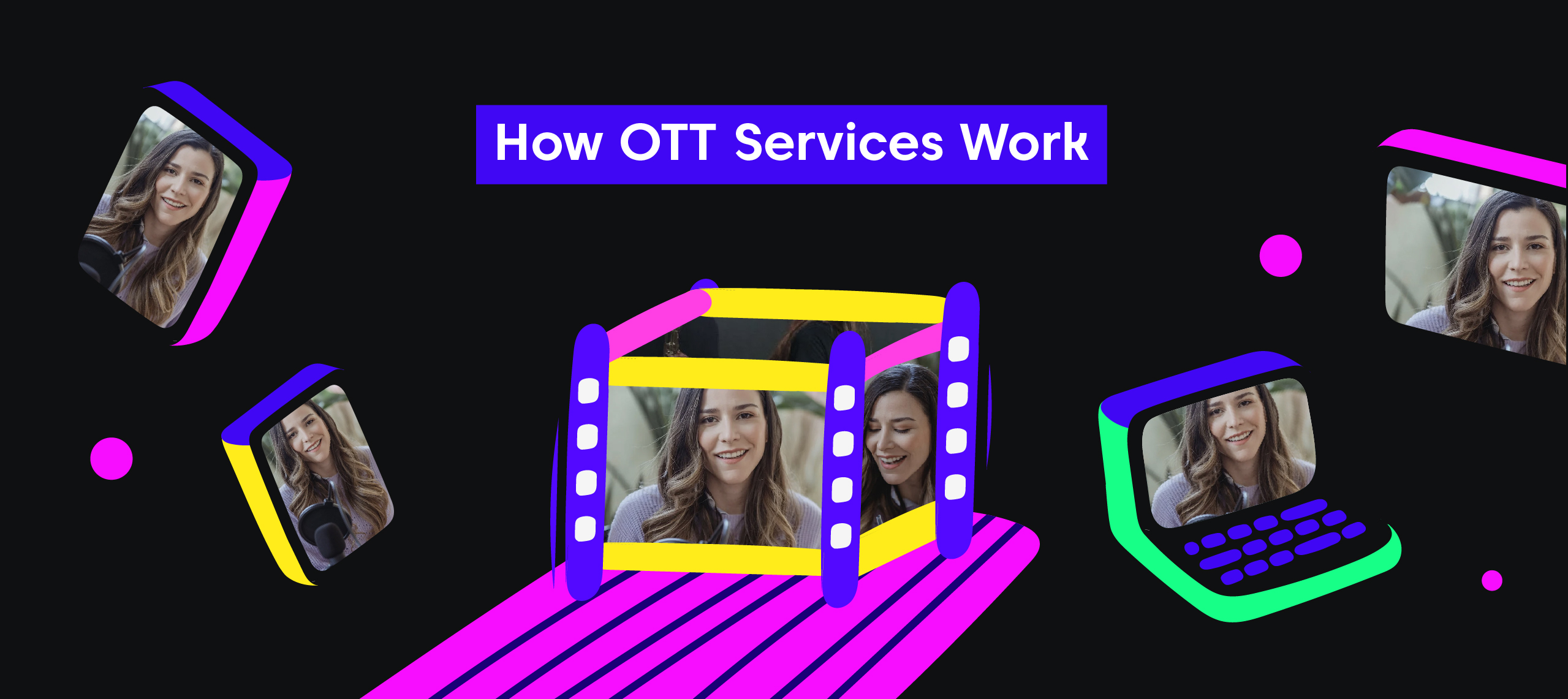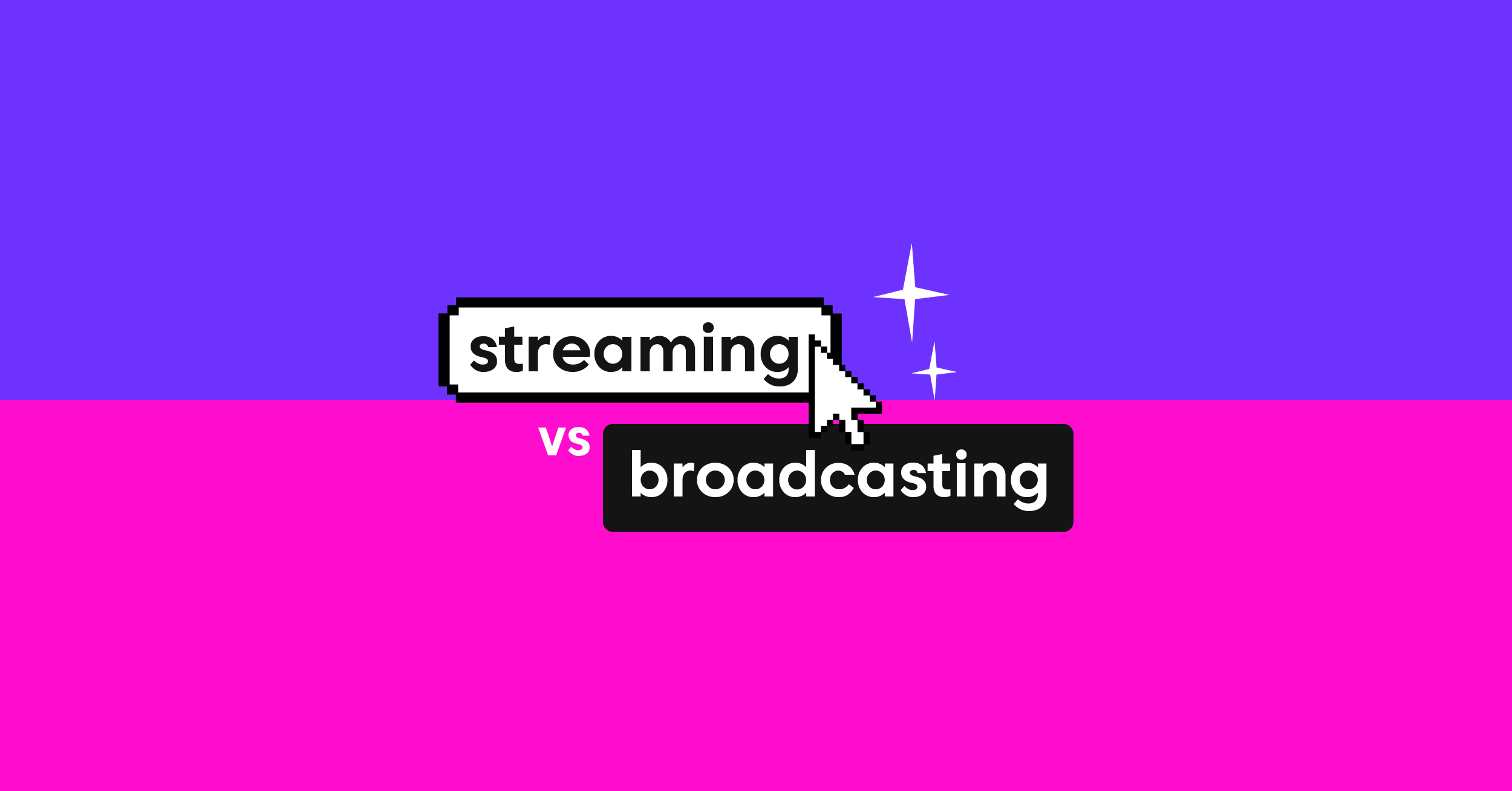What is OTT? Everything You Need to Know About OTT
Over-the-top (OTT) is a term used to describe video streaming services that are delivered over the Internet, bypassing traditional cable or satellite TV providers. This term refers to any service that enables users to access video content on demand without requiring a cable or satellite TV subscription. Accessing OTT services has gotten much simpler for customers thanks to the popularity of smart TVs and streaming devices like the Amazon Fire TV and Google Chromecast. The desktop based apps, web browsers, or mobile devices that are used to access OTT services must have an internet connection in order to view streaming content.
The business has evolved quickly in recent years, and OTT services have revolutionized the way we consume video content. A wide variety of streaming media content, including TV shows, movies, and live events, is available via OTT providers like Netflix, Amazon Prime Video, and Hulu. With businesses like Pluto TV providing quality video ad options for advertisers to reach audiences, OTT advertising has also grown to be a valuable industry.
As a service untied to any traditional cable or satellite TV service, OTT stands out in the streaming sector. Viewers that use OTT streaming can access OTT content on a variety of devices, such as smart TVs, game consoles, and mobile phones. For cord-cutters who wish to access TV content without a traditional satellite or cable service, downloading OTT apps makes it easier to access OTT services and watch OTT content on many devices.
New business models have been developed by the OTT industry, with some services providing transactional video-on-demand (TVOD) and others providing subscription video-on-demand (SVOD) services. Customers of SVOD pay a monthly or annual price to access a variety of streaming options, but customers of TVOD can pay for individual movies or TV episodes.
NOTE: OTT streaming and video streaming are not the same things because they offer varying quality content and user experiences.
The Importance of OTT in the Digital Landscape
Viewers can now watch their favorite shows on a variety of devices, including smart TVs, gaming consoles, and mobile devices, thanks to OTT services, which have completely changed how viewers access streaming video content.
OTT advertising has developed into a potent tool for organizations, offering a performance channel to track the success of their campaigns thanks to the ability to target people across platforms. We may anticipate more cutting-edge OTT marketing tactics and business models as the sector develops.
The importance of OTT in the digital landscape cannot be overstated. The prevalence of connected devices and internet services will increase demand for OTT streaming services. With more organizations and consumers adopting the technology, OTT will only have a greater impact on the media environment.
The Evolution of OTT Services
The Beginning of OTT Streaming

Beginning in the early 2000s, platforms like Netflix and Amazon Prime Video launched video streaming services that were available through web browsers and desktop based apps, giving rise to the idea of OTT streaming.
Accessing OTT services on the big screen has become simpler because of the growth of smart TVs and streaming devices like Apple TV, Google Chromecast, and Amazon Fire TV. These devices can connect to the internet through Ethernet or Wi-Fi and act as a gateway to several OTT platforms.
By enabling cord-cutting, this technology has made it possible for people to access premium video content without paying for traditional cable or satellite TV services.
Direct delivery of video streaming content to consumers’ connected devices by OTT providers serves as an alternative to traditional TV. OTT advertising has also grown more common, with services like Pluto TV offering relevant content and advertising on a performance-based channel.
With revenue models ranging from transactional video-on-demand to subscription-based services, OTT platforms have revolutionized how people consume TV programming. New and inventive methods of delivering and marketing live events, such as sporting events and concerts, have been developed as a result of the rise of OTT technology.
With new platforms, devices, and content providers regularly entering the market, OTT streaming is a flexible and dynamic sector that is still developing. Internet service providers are growing their offerings as OTT service demand rises in order to meet the rising demand for reliable internet connection access for OTT services.
Growth and Milestones of the OTT Industry
Over-the-top (OTT) industry growth in recent years has been exponential. Because of the popularity of smart TVs, streaming devices, and mobile devices, OTT services, which let users watch video content over an internet connection, have grown more and more well-known.

Due to their wide selection of video-on-demand content, including TV shows, movies, and documentaries, OTT platforms like Netflix and Amazon Prime Video have become well-known. Numerous OTT services are now offering live TV, and HBO Max includes linear TV channels in addition to its on-demand offerings. Users who want to access a variety of programming options now find OTT services to be even more alluring as a result of this content expansion.
OTT-delivered sports events and live concerts are just two of the major milestones that the business has attained. The success of the OTT sector is largely due to the availability of pertinent content, accessibility ease, and flexibility of streaming options.
Service providers are expanding their range of internet services to meet the demand for reliable internet connectivity in order to access over-the-top (OTT) services as the industry continues to expand and the market is changing.
Top 10 OTT Platforms
Here are the top 10 OTT platforms, in no particular order:
- Netflix: This streaming giant has a huge library of TV episodes, movies, and documentaries, including original content.
- Amazon Prime Video: This service offers original and licensed movies and TV series with an Amazon Prime subscription.
- Disney+: This platform includes original series and movies from Disney, Pixar, Marvel, and Star Wars.
- Hulu: This service has original and old TV series.
- HBO Max: This platform includes HBO’s popular TV episodes and movies as well as original content.
- YouTube TV delivers live TV and on-demand entertaining content.
- Apple TV+: This platform includes original TV shows, movies, and a modest selection of licensed content.
- Peacock: NBCUniversal’s streaming service provides movies, TV series, and exclusive content.
- Paramount+: This platform includes original content, live TV channels, and network on-demand programs.
- Discovery+: This streaming service features under the Discovery umbrella, such as HGTV, Food Network, and Animal Planet programming and exclusive content.
How OTT Services Work
OTT services have transformed video consumption. OTT services let customers stream video on multiple devices without cable or satellite TV.

OTT services distribute video content via IP networks instead of broadcasting. Users can access the content anytime, anywhere, on multiple devices. OTT content typically requires a stable internet connection and a device like a smart TV, streaming device, or game console.
Users pay a monthly fee for OTT providers’ content libraries. TVOD providers let customers rent or buy individual titles. Some services combine subscriptions and TVOD.
OTT services enable access to relevant content on smartphones, tablets, and desktop PCs. This lets customers watch their favorite shows and movies anywhere, including on several screens at home.
OTT services have made video consumption easier and more accessible.
Benefits of OTT Services
Over-The-Top (OTT) video services have many advantages. OTT services’ flexibility and convenience are key benefits. Users can watch on-demand entertainment whenever they wish. Users may binge-watch the full series, pause and resume, and watch on several devices.
OTT services offer a wide range of content. Most OTT providers include a huge library of movies, TV series, documentaries, and unique content. This lets people find new stuff and try other genres.
OTT is cheaper than cable or satellite TV. Users can choose the services that meet their wants and budget instead of paying for hundreds of channels they may not watch.
OTT services also offer 4K Ultra HD and Dolby Atmos sound. This enhances viewing.
OTT services have greatly improved video consumption. OTT services have revolutionized video content consumption with flexibility, cost, and quality.
Consumer benefits (the benefits of OTT from the consumers’ perspective)
Access to a large range of information/content at any time, on several devices, is one of the main advantages of over-the-top (OTT) services from the consumer’s point of view. Instead of being constrained by a conventional broadcast schedule, this flexibility enables customers to view their preferred TV series and movies on their own timetable.
Additionally, consumers can select the OTT services that best suit their needs and budget because they are frequently more affordable than traditional cable or satellite TV. Last but not least, many OTT services offer high-quality video and audio that create an immersive viewing experience that raises the level of content enjoyment overall.
Advantages for content creators (the benefits of OTT from the content creators’ perspective)
From the standpoint of content producers, over-the-top (OTT) services provide a number of advantages. Reaching a global audience is one of the most important advantages. The ability to access millions of people worldwide through OTT platforms enables content producers to increase their audience size and reach.
Additionally, OTT services provide more ways to generate income through different monetization models like subscriptions, transactional video-on-demand, and advertising. Because they can negotiate their terms with service providers, OTT services also enable content producers to maintain a greater level of creative control and ownership over their productions. In general, OTT services provide content producers with a strong platform to present their work and engage with people all over the world.
Challenges and Concerns of OTT Services
While over-the-top (OTT) services have many advantages, there are some drawbacks and issues that are associated with the platform. Given that digital content is frequently easier to copy and distribute illegally, one of the biggest problems is the potential for content piracy. Both content producers and service providers may lose out on money as a result of this. Another issue is the potential burden that streaming services may place on available internet bandwidth, which may result in slowed internet speeds or interruptions.
Concerns have also been raised regarding the OTT market’s rising monopoly of a small number of significant competitors, which could reduce competition and provide customers with fewer options. Concerns exist over data privacy as well as the gathering and usage of personal data by OTT service providers.
The Future of OTT Services and the Entertainment Industry
Over-the-top (OTT) services and the entertainment sector have a promising future ahead of them, with more growth, expansion, and innovation to come. With new platforms and technologies emerging to satisfy consumer wants, it is anticipated that OTT services will continue to grow in popularity and be integrated more deeply into customers’ daily lives. More original content will probably be created expressly for OTT services as the market develops, which will accelerate their growth.
Additionally, the user experience is anticipated to be improved and new opportunities for content personalization will be provided by the integration of artificial intelligence (AI) and machine learning. In general, the future of OTT services appears bright, with fascinating new innovations and opportunities on the horizon.
The Impact of OTT on Traditional Media (Smart TVs, Streaming Dervices, etc.)
The rise of over-the-top (OTT) services, particularly cable and satellite television, has had a considerable impact on traditional media. The number of consumers choosing OTT services has resulted in a drop in viewership and income for traditional media organizations. As a result, there has been a change in the media landscape, and many traditional media businesses have launched their own OTT services or partnered with existing ones in an effort to stay competitive.
Another change brought about by the rise of OTT services is a shift in advertising tactics, with many businesses concentrating on digital and mobile advertising. As a whole, OTT has had a large impact on traditional media and is predicted to continue to influence the sector going forwards.
Conclusion
Because they give viewers more flexibility and control over their viewing experience, over-the-top (OTT) services are important in determining the direction of entertainment in the future. Traditional media firms have been compelled to adapt and develop as more consumers choose OTT services in order to stay competitive. The growth of original content creation has also been fuelled by the rising popularity of OTT services, opening up new opportunities for content producers and further defining the future of the sector.
Additionally, it is anticipated that the incorporation of new technologies, including artificial intelligence and machine learning, will improve user experience and open up new possibilities for content personalization. Overall, it is impossible to emphasize how important OTT will be in determining the direction of entertainment.
You may easily and rapidly develop your own over-the-top (OTT) apps using Castr, a strong live streaming platform. You can easily monetize your content and reach a larger audience with Castr. For a seamless OTT streaming experience, we’re dedicated to providing our clients with 24/7 specialized tech assistance via Slack, Skype, and WhatsApp.









